Training Key to Meeting Explosive Solar Demand in the Coming Decade
Training Key to Meeting Explosive Solar Demand in the Coming Decade
By Bri Bruce, Director of Marketing, RP Construction Services, Inc.
The global Covid-19 pandemic saw unprecedented challenges across a number of sectors, including education, housing, health care, and employment. Job losses were exacerbated by the crisis, and the unemployment rate spiked in April of 2020 to levels not seen since the 1930s-and still mounted at 6.1 percent a year later in April of 2021.
The solar industry was not exempt from the fallout. According to this year's National Solar Jobs Census, The Solar Foundation's annual comprehensive study on the U.S. solar workforce, the solar industry employed just over 231,000 workers in 2020, a 6.7 percent drop from the previous year. Nevertheless, the solar industry continued to support hundreds of thousands of jobs across all 50 states, and with construction workers deemed essential, companies were largely able to keep workers on the job.
President Biden has pledged to make the United States a leader in clean energy and speed up renewables' adoption, setting a target of reducing the U.S.'s carbon footprint in half by 2035 through retrofitting for and deploying innovative clean technology, reducing emissions, and generating power from renewable sources.
In order to meet Biden's clean energy target, the solar workforce must exceed 900,000 by 2035, more than quadruple the current number. At the current rate, the industry is on track to employ only 400,000 workers by 2030.
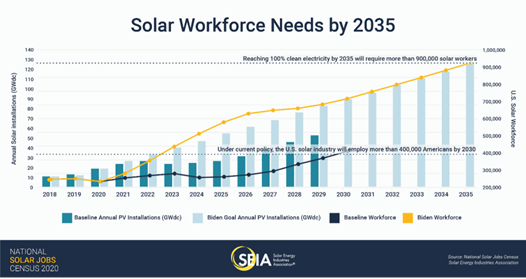
As one of the fastest-growing industries in the nation, solar can play a crucial part in the economy's recovery, presenting an opportunity to advance clean energy while also creating hundreds of thousands of high-quality jobs for men and women of all education levels and backgrounds.
While we still have a long way to go, the solar industry is poised for dramatic growth over the next decade. The U.S. is predicted to install nearly 100GW of solar in the next five years, representing a 42 percent increase over the previous five years. Experts estimate it is possible that nearly one million renewable energy jobs could be created if the current administration's historic American Jobs Plan passed, an investment aimed at creating jobs, rebuilding the nation's infrastructure, and strengthening the economy. This effort, along with those of organizations like the Solar Energy Industries Association (SEIA), advocates for policies that will not only grow clean energy deployment but lay the foundation to hire and train workers.
And herein lies the path to meeting current demand and achieving the anticipated record deployment. The first logical step is to hire the workforce needed to meet the surge in solar demand. But once hires have been made, how does the industry deploy the solar energy needed to meet the clean energy target? With this workforce increase, and with it the added challenges additional projects represent-in the construction process, in job safety, and in labor force wellbeing-how can power producers and contractors be prepared to succeed? How do we meet this demand on schedule and ensure that projects are built properly and safely?
The key to achieving the current administration's target, RPCS believes, is training.
BUILDING THE FUTURE OF ENERGY
Installation and construction-related employment represented the largest segment in the industry in 2020, at 67 percent of all jobs. And of all installation jobs, 19 percent were in the utility-scale sector, which saw a 32 percent increase in labor productivity. What's more is that utility-scale installations contributed to a record amount of added solar capacity. Despite the effects of the pandemic to the industry as a whole, utility-scale installers are well-positioned to lead the way to a clean energy future.
The core of RPCS' business lies in serving the utility-scale solar sector, providing turnkey design, installation, supply, and specialty services to developers, EPCs, and municipal utilities. Larger and larger projects are coming down the pipeline as the demand for solar energy accelerates. This was a trend that RPCS saw coming, and to adapt has been an all-out effort for the past several years. As a leading solar contractor, RPCS has developed and continues to innovate visionary ways to accommodate the solar boom in construction, logistics, and internal business practices.
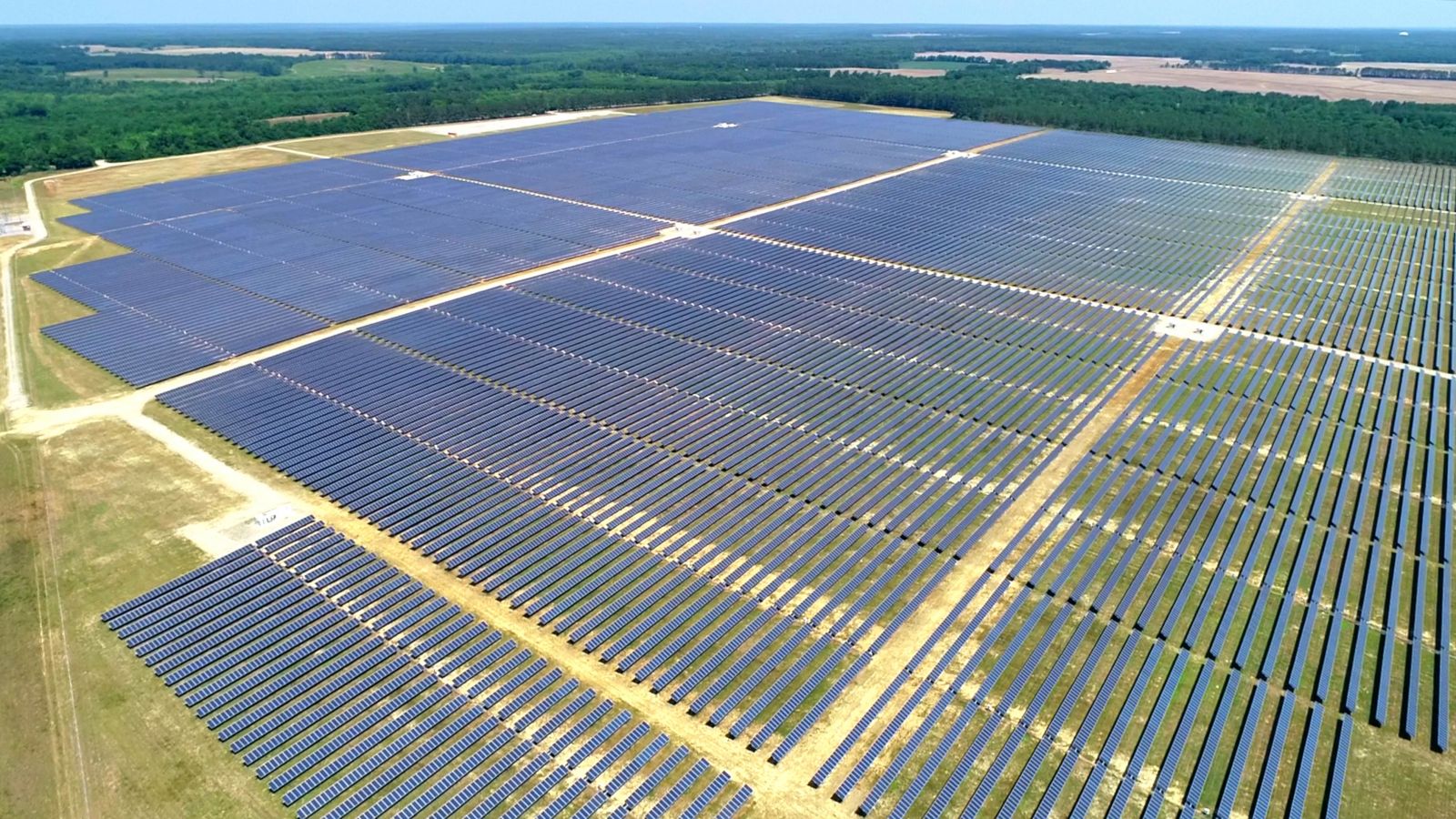
TRAINING PRACTICES PAVE THE WAY FOR MORE EFFICIENT, HIGHER QUALITY SOLAR DEPLOYMENT
Given Biden's clean energy plan, the expansion of solar energy installations and the hiring of the workforce to achieve these installations has to happen fast.
Experts claim that one of the biggest challenges facing the solar industry today is a lack of skilled individuals. Because the industry is relatively new, and experiencing tremendous growth to boot, individuals with experience are harder to come by. The solar industry is facing a labor shortage that is threatening to hinder growth, a trend observed even before the pandemic rocked the solar world.
Meeting the clean energy target will depend largely on amassing the workforce needed to build the solar projects that will contribute to cutting emissions in half. And even if the required 900,000 workers are hired, the new workforce will need to be trained. Afterall, installations must be done correctly by proficient personnel to meet the end goal of a fully operational solar array. In short, solar will need more qualified workers to meet the target.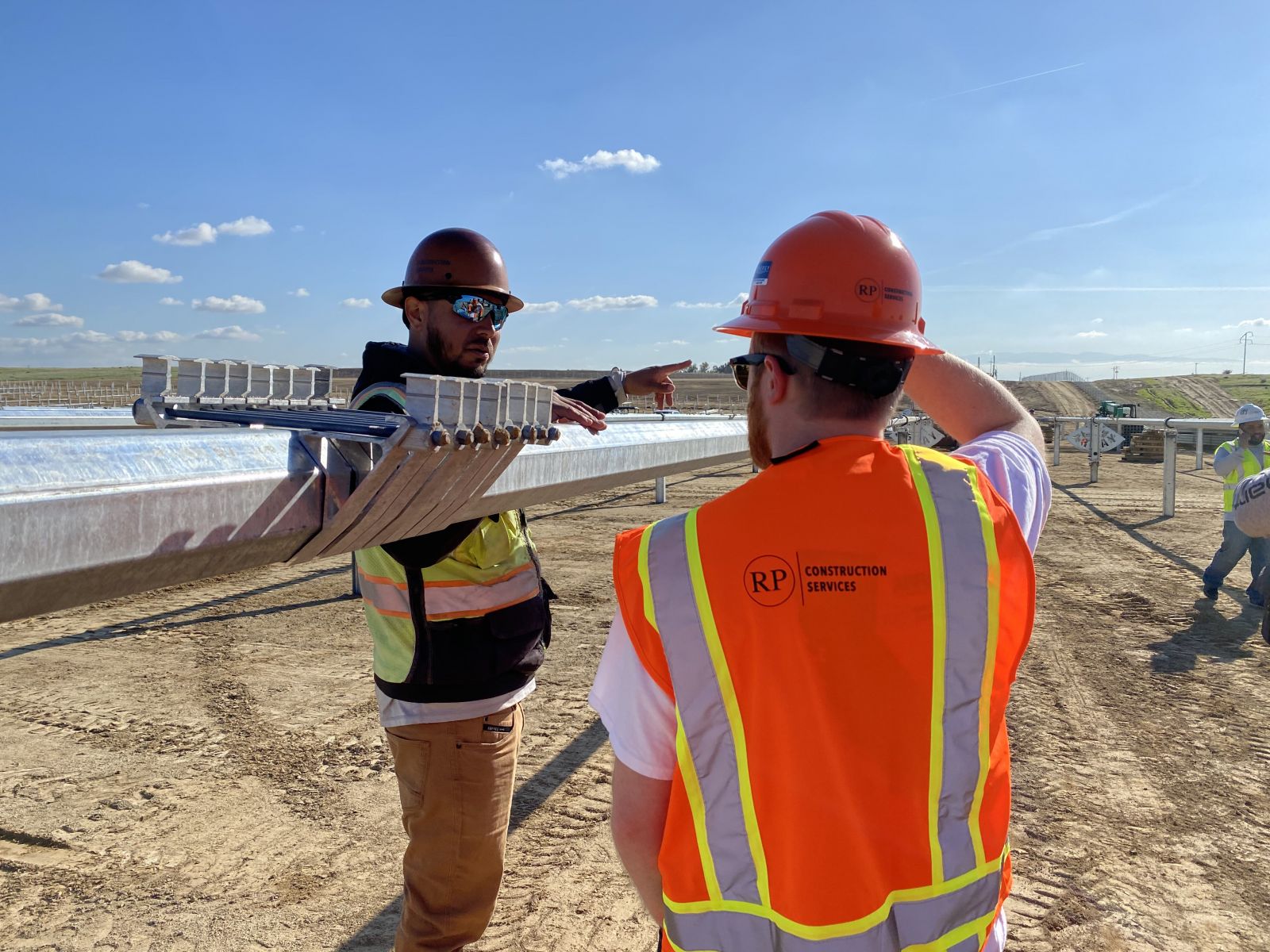
To circumvent the labor shortage, RPCS' strategy has been instead to invest in training. RPCS employs individuals from diverse backgrounds, including military veterans, farm workers, and former first responders, focusing on those with transferable skills, not just those with solar industry experience. An important quality the company is looking for in a candidate is trainability. "When it comes to recruiting," says RPCS Director of Human Resources Andrew Sanders, "attitude, drive, and commitment are all important in a candidate, but trainability is huge. Our goal is to train employees to build safely with quality and proficiency so we can be successful."
Sanders continues, "I liken RPCS' strategy to asking an artist if, given the choice, they would rather have a clump of clay to mold, or one that has already been sculpted. Most artists would take a clump of clay any day! I view RPCS as the artist and our employees are the clay. It's much easier to build a solid foundation and create good habits than it is to break and reshape bad ones. While there are advantages to hiring experienced candidates for certain roles, RPCS would much rather have the proverbial blank canvas to build upon and inspire."
RPCS places a calculated emphasis on training, understanding that the value of ensuring the safety and skill of those on the front lines of solar deployment are not to be underestimated if we're to meet the record-number of solar installations on the way. Training will help build the foundation of the clean energy transition.
TRAINING STRATEGIES
As a way to support the quickly growing utility market, and become more efficient at building larger sites, RPCS began to ramp up recruiting and hiring initiatives in 2018. Since then, the company has grown its workforce 267 percent, despite the labor shortage, helping RPCS to achieve a more than 480 percent increase in the number of megawatts completed. RPCS has been ranked as a top US solar contractor in Solar Power World magazine's Top Solar Contractors List for the last three years in a row, climbing in rank each year.
Because of RPCS' explosive growth in the past five years, the hiring of new staff required attention to training and development efforts to allow RPCS to grow safely, without compromising the company's stellar reputation for quality. Employees are one of the most important assets to RPCS, which is why the company believes in investing in their safety and development, both of which are foundational to continuing its success in the solar industry.
Beyond enforcing strict P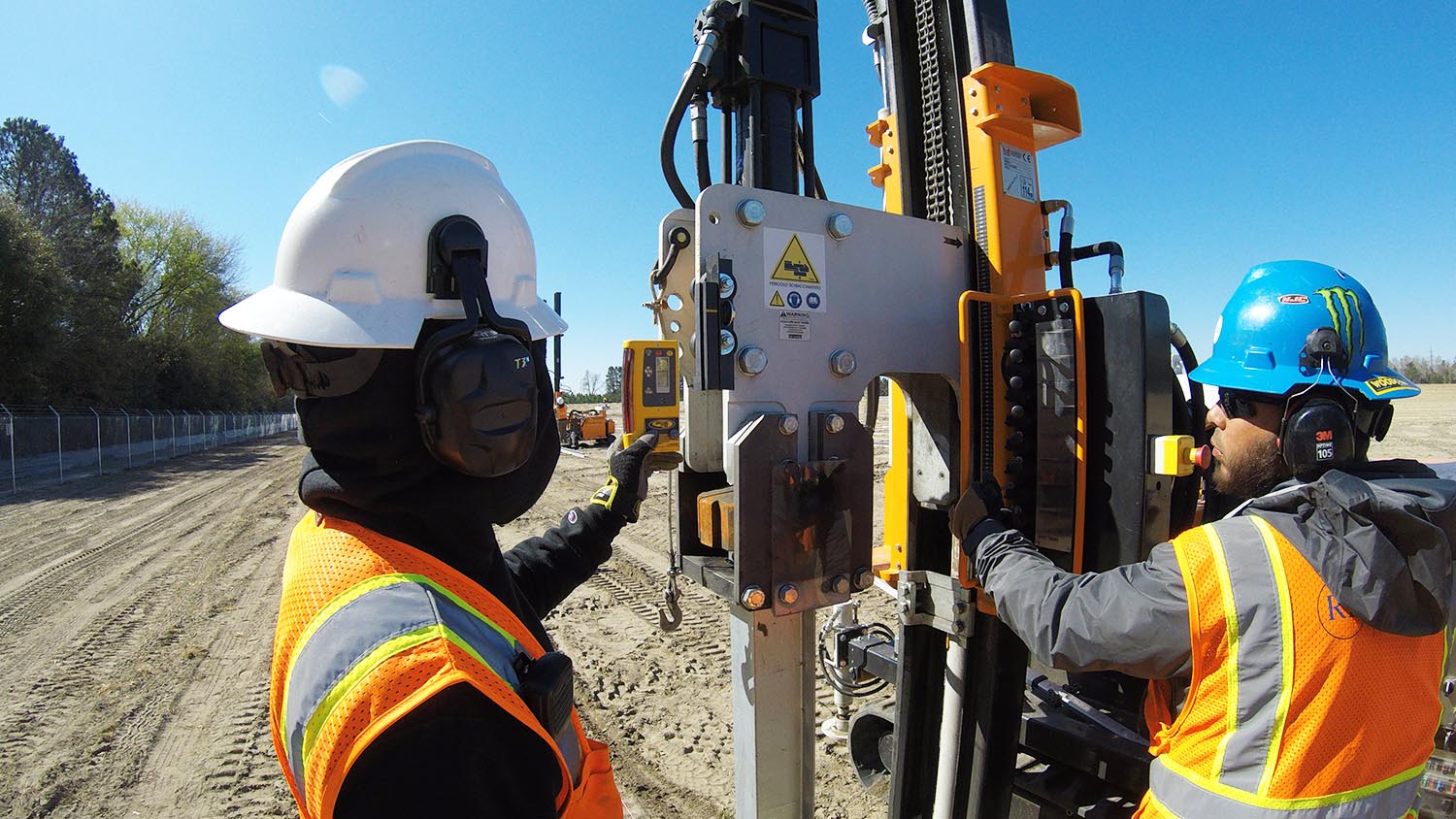
Part of the company's initiative entailed bringing on ground mount solar construction experts with a passion for construction and teamwork to lead RPCS' formal training programs. Programs like the RPCS Academy aim to standardize installation processes and techniques that coincide with RPCS' values of safety, quality, and production. "A key piece to our training is uniformity-training all our team members the same thing regardless of whether you are a superintendent or a brand-new hire," says RPCS Safety Director Keith DeCarlo, who is helping spearhead the standardization of the company's installation processes. "It's not my way or your way; we are building the RPCS way."
The company's Second Chance program offers employment opportunities for former criminal offenders and a chance to transform their lives while providing an opportunity to work in an exciting, growing industry. Other development programs empower employees to build and improve skills and provide an opportunity for advancement through earning certifications, like those administered by the Occupational Safety and Health Administration (OSHA).
"The more thoroughly we train our employees the safer our company is, and we greatly lower the risk for incident," explains DeCarlo.
TECH ENABLEMENT
Being able to effectively design, procure, and build dozens of projects spread all over the country simultaneously is a major challenge. RPCS is constantly developing new, innovative ways to deploy material and crews, standardize processes, and manage and track equipment and project statuses, as well as the many other intricacies of utility scale projects.
To address these complexities, RPCS developed and deployed a custom mobile and desktop application specifically built to streamline job site reporting and to monitor progress. With this custom app, RPCS site leadership and project management teams can effectively oversee projects in real time while ensuring schedules are being met and safety and quality are maintained. With the app's training center, users can access training documents for improved workforce performance and how-to guides for each step of the installation process.
With the help of technology developed in-house, RPCS has mastered site management, making deployment easy while providing safe, high-quality construction capability and bringing increasing value to its customers and partners.
EQUIPMENT & MAINTENANCE
RPCS is unique in that its focus is on a single product: the DuraTrack HZ v3 single-axis solar tracker by Array Technologies. Not only is RPCS Array's trusted partner and the market's expert when it comes to the mechanical installation of the Array tracker, but its workforce is more than familiar with the specific tools and equipment needed to install the tracker safely and to the highest degree of quality.
RPCS owns a number of machines, including pile drivers, drills, and a vibratory extractor. Along with helping equipment operators become certified in operating company-owned equipment, RPCS' operations team helps deploy a preventative maintenance plan for all tools and equipment to follow maintenance cycles and ensure their proper use.
Crew members are also trained in basic machine maintenance, performing daily preventative maintenance and scheduled maintenance to mitigate breakdowns to help projects stay on schedule. RPCS keeps a small stock of heavy equipment both in the machine itself for fast, onsite repair and in its stocking yards for ease of shipment to sites in case of necessary repairs.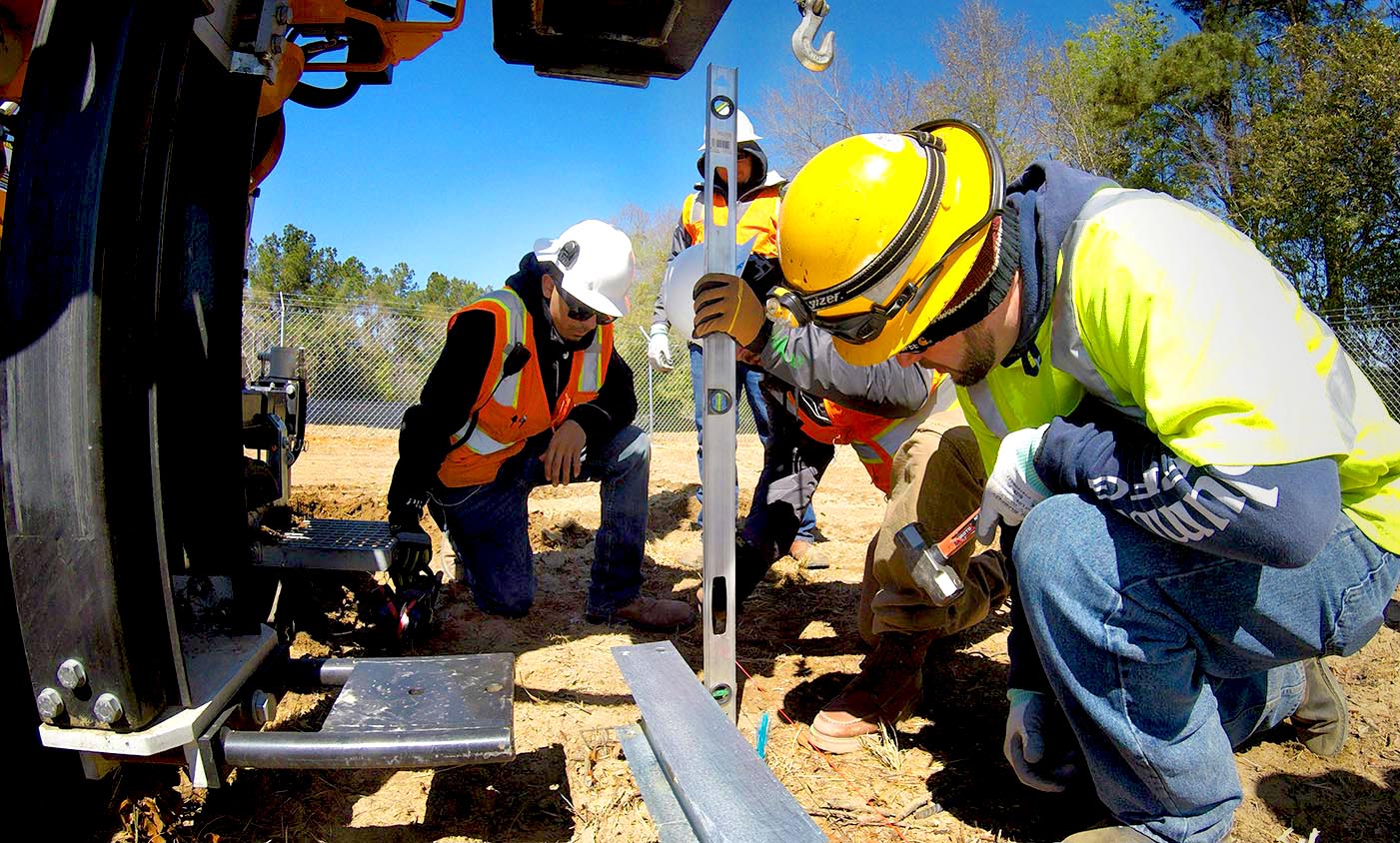
Each site is equipped with a toolbox containing all the tools needed to install and QA/QC a project. Upon the completion of a project, toolboxes are shipped back to RPCS' logistics facility for thorough inventory, maintenance, and any necessary repairs or replacements before being sent back out to a new project.
RPCS Founder and CEO Eben Russell stresses the importance of maintenance by recalling an event from his sailing days, specifically a particular long-distance excursion from Bermuda to Rhode Island. While conducting a routine inspection, Russell noticed a small crack in a chainplate connected to the sailboat's mast. The crack was nearly undetectable and could easily have been overlooked. Shortly after bringing the sailboat to port for the repair, the crew set off again only to be caught in a storm for several days with 60-knot winds. "If it weren't for the daily maintenance check-out of the boat, which lead to remediating the crack," Russell says, "the boat and the crew almost certainly would have perished at sea."
SAFETY
Safety is paramount to RPCS's operations and plays a large role in proper training. With the best possible safety rating for a firm of its size for each year of operation, RPCS continuously improves practices in light of advances in technology and new understandings in safety, health, and environmental science.
"Safety, quality, and then production-this is the moto and culture we are building within RPCS," says Keith DeCarlo. "When you have a safe site focused on quality and not numbers, you will have a productive site by greatly reducing safety standdowns and eliminating re-work. The best way to accomplish this is through one-on-one training. We are the only company in the industry that is making this kind of investment."
RPCS provides each project with a site-specific safety and health manual that outlines plans and procedures for safe installation as well as proper on-the-job conduct. Site-specific safety plans aim to protect the health and welfare of all workers, visitors, and site personnel through proactive safety management and hazard analysis. Safety guidelines are continually updated to include best practices as required by changes in policy, regulations, or as a result of findings from any incidents.
Training is built into the company culture, which fosters an environment of collaboration, teamwork, and personal development. Training often involves blending techniques from different regional crews to find the safest, most efficient process. This method has proved effective and is a way to encourage teamwork and build camaraderie, often leading to open dialogue about improvements. "Honesty, integrity, and self-discipline are secondary focal points in our training," DeCarlo explains. "These are key areas. We can't hit our safety and quality focal points without building these into our culture."
INVESTING IN TRAINING IS SECRET TO SUCCESS
RPCS has built a world-class team by hiring people, not positions, and knows a well-placed investment in workforce training is key to deploying the solar pipeline on the horizon-and bringing the nation closer to meeting clean energy targets.
There's a popular military adage (along with several variations) called the five Ps: proper planning prevents poor performance. RPCS is a firm advocate of proper planning on all business operation levels, especially training. Training advances workforce performance, while also ensuring safe work practices and the proper use of equipment, all for the end goal of quality installation and service.
"It's all about setting yourself up for success, investing in your employees and creating more value for your customers," RPCS' Vice President of Operations Dave Mead states. "Investing in your employees with experiential training and hands-on learning in an environment that rewards effort is the winning combination for building an effective and profitable workforce."
With innovative training approaches, strategies, and tools, RPCS is leading the way to a clean energy future.
RP Construction Services, Inc. (RPCS) provides turnkey design, structural engineering, procurement/supply, mechanical installation, and specialty services to EPC contractors, developers, and municipal utilities. As one of the nation's leading solar contractors and single-axis tracker expert, RPCS has completed more than 700 projects, totaling over 2.5GW, and helps customers meet their renewable energy goals with simple, seamless project execution. Connect with RPCS on LinkedIn or learn more at www.rpcs.com.
SOURCES
"COVID-19 Erases Five Years of Solar Job Growth." Solar Energy Industries Association. Accessed May 18, 2021. https://www.seia.org/news/covid-19-erases-five-years-solar-job-growth
Crowell, Chris. "Solar needs 4x more jobs to hit U.S. energy goals and more stats from Solar Jobs Census." Solar Builder Magazine. May 6, 2021. Accessed May 18, 2021. https://solarbuildermag.com/news/solar-needs-4x-more-jobs-to-hit-u-s-energy-goals-and-more-stats-from-solar-jobs-census/
Holzberg, Melissa. "Biden Wants 'Clean' Electricity By 2035. A Pandemic-Driven Fall In Solar Jobs Complicates That." Forbes. May 6, 2021. Accessed May 18, 2021. https://www.forbes.com/sites/melissaholzberg/2021/05/06/biden-wants-clean-electricity-by-2035-a-pandemic-driven-fall-in-solar-jobs-complicates-that/?sh=1662d758689b
Misbrener, Kelsey. "Solar skilled labor shortage hinders industry growth, but collaboration could change the course." January 8, 2018. Accessed May 18, 2021. https://www.solarpowerworldonline.com/2018/01/solar-skilled-labor-shortage-hinders-industry-growth/
"Solar Jobs Support 231,000 Families, Must Grow 4X to Reach Biden's Clean Energy Target." The Solar Foundation. May 6, 2021. Accessed May 18, 2021. https://www.thesolarfoundation.org/solar-jobs-support-231000-families-must-grow-4x-to-reach-bidens-clean-energy-target-2/
Volume: 2021 July/August











.png?r=4505)
